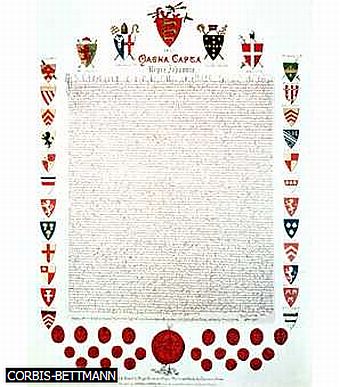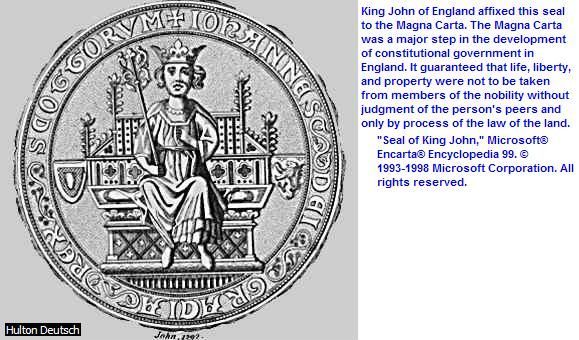magnanimous.adjective
courageously noble in mind and heart; generous
in forgiving; eschewing resentment or revenge; unselfish (the magnanimous
professor cared for truth in spite of the criticism of his superiors)
magnanimously.adverb
magnanimousness.noun
magnanimity.noun;.plural-magnanimities
the quality of being magnanimous
Mendeleev, Dmitri Ivanovich;
1834-1907
Russian chemist who first devised and published
the periodic table of the elements
(1869).
magnetism.noun
the class of phenomena
exhibited by a magnetic
field; the study of magnets and their effects; the force exerted by
a magnetic field
mull,
mulled,
mulling,
mull.verbs
transitive
verb use.to go over extensively in
the mind; ponder
intransitive
verb use.to ruminate;
ponder.(mull
over a plan)
method.noun
a means or manner of procedure,
especially a regular and systematic
way of accomplishing something (a simple method for making a pie crust;
mediation
as a method of solving disputes)
methodology.noun,.plural.methodologies
a body of practices, procedures and rules used
by those who work in a discipline or engage in an inquiry; a set of working
methods (the methodology of genetic studies; an opinion poll marred
by faulty methodology); the study or theoretical.analysis
of such working methods
methodological.adjective
methodologically.adverb
methodical.also.methodic.adjective
arranged or proceeding in regular, systematic
order; characterized by ordered
and systematic habits or behavior; orderly
methodically.adverb
methodicalness.noun
methylate.noun
an organic.compound
in which the hydrogen
of the hydroxyl group of methyl
alcohol is replaced by a metal
methylate, methylated,
methylating,
methylates.transitive
verbs
to mix or combine with methyl alcohol; to combine
with the methyl radical
methylation, methylator.nouns
momentum.noun;.plural-momenta-or-momentums
Physics.–.a
measure of the motion of a body equal to the product of its mass
and velocity;
also called linear momentum; impetus
of a physical object in motion
meningitis.noun
inflammation of the meninges of the brain and
the spinal cord, most often caused by a bacterial
or
viral infection
and characterized by fever, vomiting, intense headache, and stiff neck
meningitic.adjective
myoglobin.noun
the form of hemoglobin
found in muscle fibers, having a higher affinity
for oxygen than hemoglobin of the blood
multifarious.adjective
having great variety; diverse;
versatile
multifariously.adverb
multifariousness.noun
metabolite.noun
a substance
produced by metabolism; a substance necessary for or taking part in a particular-metabolic
process
malleable.adjective
capable of being shaped or formed, as by hammering
or pressure: a malleable metal; easily controlled or influenced; tractable;
able to adjust to changing circumstances; adaptable (the malleable mind
of the pragmatist)
malleability or malleableness.nouns
mallably.adverb
synonyms-ductile,
plastic, pliable, pliant
Magna Carta-(means
"Great Charter")
a document sealed by King John of England
on June 15, 1215, in which he made a series of promises to his subjects
that he would govern England and deal with his vassals according to the
customs of feudal law (see an encyclopedia). Over the course of centuries,
these promises have required governments in England (and in countries influenced
by English tradition) to follow the law in dealing with their citizens,
including
the need, stated in the Magna Carta (1215),
for taxes to have the consent of the taxed. The Magna Carta was
incorporated into a documenet purported
to be a constitution for Canada.(when Canada
already had one and didn't know it {thanks all you Canadian politicians
of times past}).and
of
course even the invalid one that
was concocted
is not followed by Canada's government


King John of England had spent the years since
the loss of Normandy and Anjou in preparation for a large scale military
campaign to recover lands from Philip II. To raise money for the campaign,
John demanded more taxes and services from his subjects than ever before.
In addition, he ruled them very harshly because he feared disloyalty from
the English barons. But his campaign to recover his lands in France failed
disastrously. When John returned to England to collect even more money,
many of the English barons revolted. The rebel lords captured London but
did not defeat John's forces decisively. By the spring of 1215, a stalemate
approached and the two sides began to negotiate. The Magna Carta was the
result of these discussions, and John agreed to it in 1215 at Runnymede,
a meadow near Windsor.
The Magna Carta of 1215 contains 63 clauses. The
first restates the charter that John issued in 1214, which had granted
liberties to the Church. In many clauses John promises to be less harsh
in enforcing his feudal rights on the barons, and another clause states
that the barons must grant to their tenants all the feudal concessions
that the king has made to them. Many clauses concern the legal system;
in these John promises to provide good and fair justice in various ways.
The last few clauses concern enforcement of the
document.
The two most important clauses
of Magna Carta are among the legal clauses. Clause 40 promises, "To no
one will we sell, to no one will we deny or delay right or justice." This
clause establishes the principle of equal access to the courts for all
citizens without exorbitant fees. In clause 39, the king promises, "No
free man shall be taken or imprisoned or disseised or outlawed or exiled
or in any way destroyed, nor will we go or send against him, except by
the lawful judgment of his peers or by the law of the land." This clause
establishes that the king would follow legal procedure before he punished
someone. Historians have debated at length the meaning in 1215 of "by lawful
judgment of his peers or by the law of the land," and who exactly was covered
by the term "free man." By the later 14th century, however, statutes interpreting
the Magna Carta equated "judgment of peers" with trial by jury (which did
not exist in criminal cases in 1215). Other statutes rephrased "by the
law of the land" as "by due process of law." These later statutes also
substituted "no one" or "no man of any sort or condition" for "no free
man," which extended the protections of the clause to all the king's subjects.
These protections were cited in many founding documents of the American
colonies and were incorporated into the
Constitution of the United States.
Forces That Shaped The Constitution:
In 1774 the Parliament of Great Britain capped a series of abuses against
the American colonies by imposing a tax on tea imports to the colonies.
The colonies quickly agreed to convene a Continental Congress, which in
1776 appointed two committees-one to draft the Declaration of Independence
and the other to prepare a "form of confederation" among the colonies.
In 1778 this second committee produced the Articles of Confederation. They
took effect in 1781 when Maryland, the last holdout state, ratified them.
The Articles of Confederation established a league
of friendship among the states, but not a political union. Each state remained
separate and sovereign (under self-rule). The central government consisted
of a one chamber Congress, in which each state had a single vote. Congress
had few powers, lacking even the authority to impose taxes. Any congressional
action required the approval of 9 of the 13 states. The government had
no president and no central court.
After numerous votes settled the details, a committee
on style and revision was assigned in to put the final results in language
to
submit to the people for ratification. Two political theorists had
great influence on the creation of the Constitution. John Locke, an important
British political philosopher, had a large impact through his Second
Treatise of Government (1690). Locke argued that
sovereignty
resides in individuals, not rulers. A political state, he theorized, emerged
from a social contract among the people, who consent to government in order
to preserve their lives, liberties, and property. In the words of the Declaration
of Independence, which also drew heavily on Locke, governments derive "their
just powers from the consent of the governed."
The framers of the U.S. Constitution sought put
the Constitution above legislative power, indeed, above all governmental
powers. The Constitution, particularly the Supremacy Clause of Article
VI, establishes the "rule of law," the idea that the government itself,
including the president and Congress, must abide by the law.
The Constitution had to be ratified by nine states
before it could take effect.
The Constitution spells out in six articles (sections)
the powers of the federal government and the states (the Constitution does
not include the term separation of powers) The first three articles establish
the separation mechanism and mark out areas of responsibility for each
branch of government.
Later amendments expanded some of these powers
and limited others. The Constitution prevents tyrannical abuses of authority
through the separation of powers: each branch of government has its own
responsibilities and cannot take action in areas assigned to the other
branches.
No member of Congress may serve simultaneously
as a member of the executive branch. This separation differs strikingly
from the British practice, in which the prime minister and other executive
officials are also members of Parliament..comprised
with Microsoft® Encarta® Encyclopedia 99. © 1993-1998 Microsoft
Corporation. All rights reserved..The
complete United States Constitution is in Encarta.